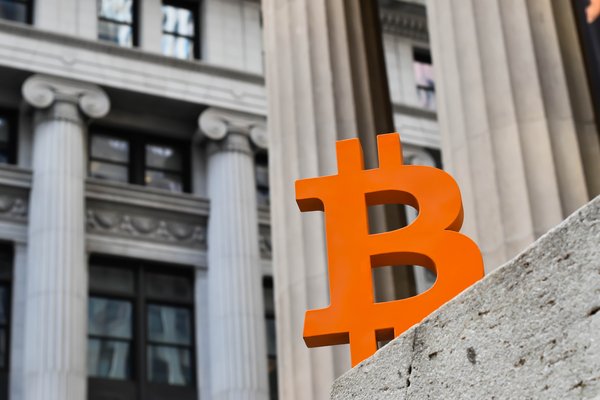Many cryptocurrency investors want to earn an annual yield on their holdings, similar to interest rates on a traditional savings account or a certificate of deposit. Liquidity mining is one of the most popular methods to achieve this goal. In liquidity mining, you allow decentralized trading exchanges to use your crypto tokens as a source of liquidity. In return, you can earn an annual percentage yield (APY) in the range of double-digit or even triple-digit percentages.

What is liquidity mining?
In crypto liquidity mining, you earn rewards by letting a decentralized trading service work with some of your cryptocurrency tokens. These tokens will facilitate low-friction trades between anonymous crypto holders.
Liquidity mining explained
Let’s start from the bottom and work our way up.
A decentralized exchange (DEX) such as Uniswap (CRYPTO:UNI) or SushiSwap (CRYPTO:SUSHI) lets buyers and sellers connect and swap different cryptocurrency tokens without the involvement of a third-party trading platform. This is done by smart contracts on a platform such as Ethereum (CRYPTO:ETH) and Binance Coin (CRYPTO:BNB), never touching an outside server or database.
Transactions made on these exchanges can be completely anonymous and will never involve a profit-seeking intermediary such as a bank or a financial services company. DEXes are seen as a crucial ingredient in truly decentralized finance (DeFi) systems.
DEX exchanges need capital to execute their trading services. This is provided by so-called liquidity pools, where investors can park their crypto assets to earn rewards in the form of crypto tokens or interest payments. The locked-in funds then serve as the lifeblood of the decentralized crypto exchange. Without this liquid base of digital capital at their fingertips, the DEX trading systems would quickly grind to a halt.
In turn, the liquidity pools require the involvement of investors who are willing to lock in their crypto tokens in exchange for rewards. The investments end up facilitating trades on the DEX platform. The act of parking tokens in a DEX liquidity pool to qualify for rewards is known as liquidity mining.
How liquidity mining works
Let’s say you want to tap into a liquidity pool on Uniswap, which is the oldest and largest DEX. This will be a multi-step process involving several different mobile apps or websites.
First, you need to own some digital coins. For this example, we’ll work with Ethereum and the Tether (CRYPTO:USDT) stablecoin. In most cases, the coins you’re putting to work can’t be held in your crypto trading service’s standard wallet. Instead, they must be transferred to a self-custody wallet, where you have direct control over the assets.
Then you go to Uniswap’s mobile app or browser-based portal to connect your wallet and add your tokens to the liquidity pool. Click on the “pool” button and then the “new position” link, select the Uniswap trading pair you want, and see how the rewards work out. Ethereum and Tether are one of the most popular pairings on Uniswap, so we’re going with those options.
You can pick one of several reward tiers tied to different interest rates charged to traders who actually make use of the digital funds you’re providing. Very common cryptocurrencies and stablecoins typically lean toward the lower end of the pool fees; rare and exotic coins often carry higher fees.
So let’s select the middling fee tier of 0.3%, as most Ethereum-Tether liquidity miners do on Uniswap. That usually gives you an APR in the range of 80% to 90%, although the exact value varies over time. What actually happens is that the group of liquidity miners gets to share the fees collected from traders on the DEX, and the shared haul grows larger as trading volumes increase. Therefore, a smaller fee can work out to a larger payout if that particular tier happens to be incredibly active on the Uniswap trading platform. A larger stake of locked-in liquidity gives you a bigger piece of the total pie.
Now it’s finally time to select the amount of Ethereum you want to lock up, which is automatically matched by some Tether tokens. Both tokens must be in your wallet, and the Tether to Ethereum ratio varies across the different fee tiers.
You collect your liquidity tokens, then sit back and wait for the rewards to roll in. Risky and uncommon token pairs usually offer higher rewards, while a pair of stablecoins might generate close to zero rewards.
Pros and cons of liquidity mining
Liquidity mining can be a very lucrative investment, with annual interest rates often measured in double- or triple-digit percentages.
However, you can only get those stellar APRs by accepting a significant amount of risk. Higher yields are usually attached to pairings that involve smaller crypto projects with short operating histories and limited market caps. Bugs in the DEX system’s smart contracts could also undermine or erase your gains, and significant price changes in one or both of the crypto pairing’s components could also hurt your returns.
Liquidity pools also can be vulnerable to a unique type of fraud known as a “rug pull.” Scammers set up a new cryptocurrency and push capital into the coin through DEX services. The project backer’s quick investment drives coin prices sky-high, inspiring other investors to jump on the bandwagon. The liquidity pools powering these trades can grow to millions of dollars in less than a day, and then the scammer withdraws the entire liquidity pool. The new project collapses while the bad guys walk away with a beefy profit.
Finding the right balance between risk and reward can be difficult, given the large number of liquidity mining options. There are several DEX platforms and hundreds of active currency pairings. There will likely be some trial and error involved in your first liquidity mining investments. Cryptocurrencies are inherently volatile and you should be prepared for big price swings on a daily basis. Your life savings probably don’t belong in a high-yield liquidity mining account. This is a place for smaller investments.
Also, don’t forget that activating or ending a liquidity mining setup is a transaction on one of the major smart contract blockchains, where the processing fees can carve out a large slice of your investment returns.
Liquidity mining vs. yield farming
Yield farming is closely related to liquidity mining, but it’s not the same thing. This is a broader strategy, tapping into many different DeFi products to produce generous APY returns.
It can be done by hand, but advanced investors can automate the process via smart contracts. Yield farmers make investments across many types of interest-generating assets. This includes crypto staking in proof-of-stake cryptocurrencies, lending or borrowing funds on various platforms, and adding liquidity to DEX platforms. Yes, liquidity mining is an important part of the yield farming strategy. The automated type of yield farming provides a significant amount of the DEX trading volume that drives liquidity rewards higher.
Related investing topics
Top liquidity mining pools
We already looked at Uniswap, which is a market-leading DEX running on any blockchain network that can process Ethereum-compatible smart contracts. This sophisticated system was among the first decentralized exchanges, and many rivals started out as clones of Uniswap’s open-source code. You can find pretty much any liquidity pool pairing you want here, but the most popular pairs tend to match an Ethereum-like token with a stablecoin.
The SushiSwap DEX started life as a Uniswap fork with extra features. The SushiSwap team aims to provide a wide range of financial services in the future, including trading of stocks, futures, and options. For now, the platform offers liquidity mining yields comparable to Uniswap’s and an even larger catalog of token pairings.
Curve Finance (CRYPTO:CRV) is a unique DEX with a liquidity pool based entirely on stablecoins. Annual yields are measured in single-digit percentages, but Curve is less volatile than the Uniswap-based alternatives. When DeFi apps exchange dollar-based value from one trading platform to another, they are likely to tap into this stablecoin interchange platform.
Liquidity mining can play a healthy part in your financial life, but it’s still a relatively risky idea while the young crypto market is just taking shape. Double-digit yields sound too good to be true, and maybe they are. For a more cautious approach to the crypto sector, you could take a look at the best cryptocurrency stocks for 2022. After all, buying great stocks and holding them for a long time remains the most sensible way to build life-changing wealth.





























































































































